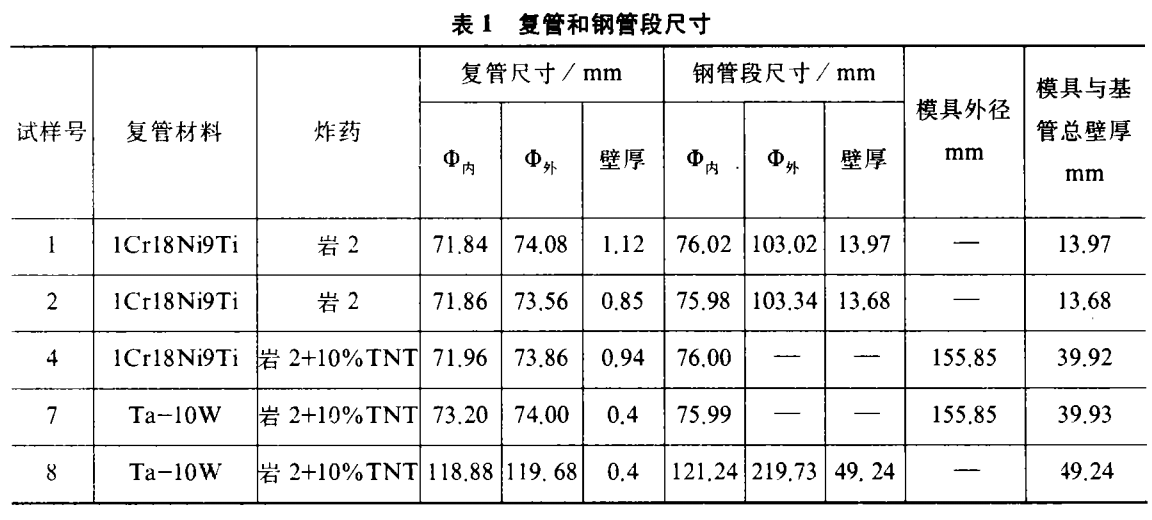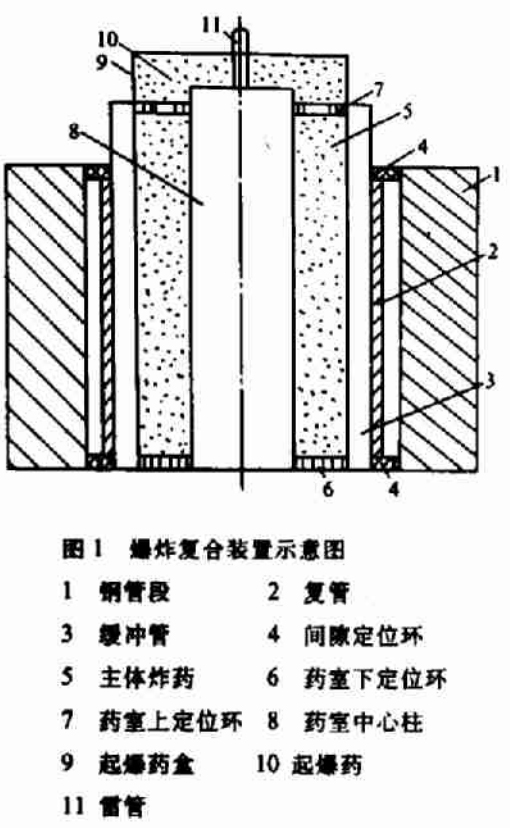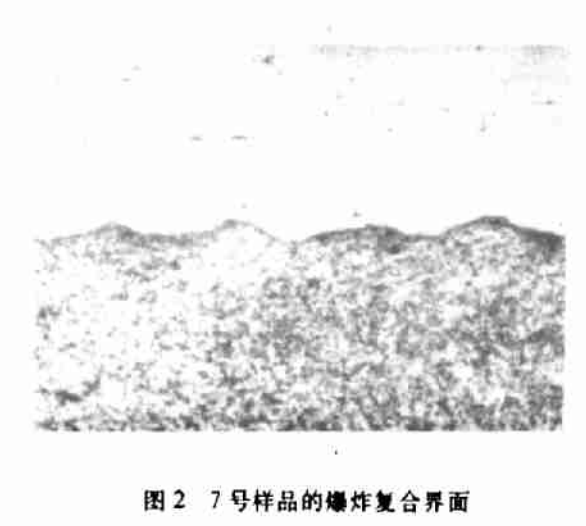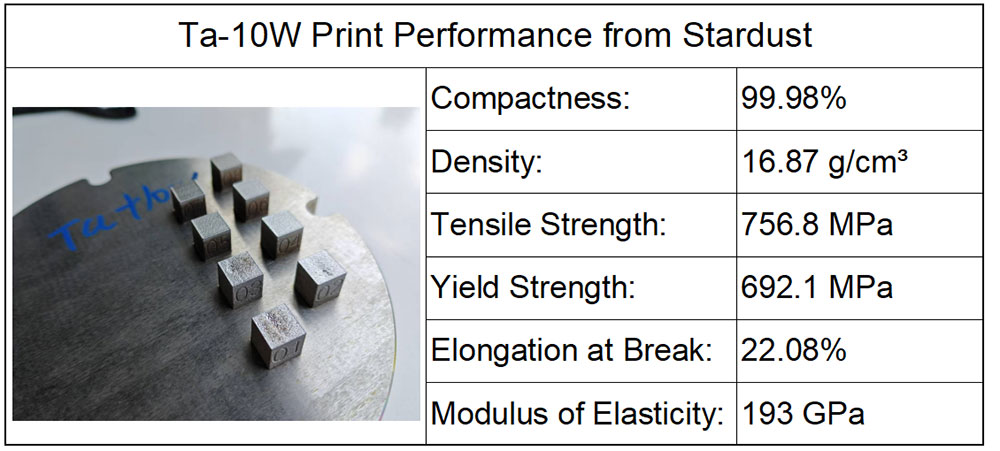-
-
-
National Titanium and Rare Metal Powder Metallurgy Engineering Technology Research Center
-
Guangdong Metal Powder Material Engineering Technology Research Center
-
Guangdong Powder Metallurgy Industry Technology Innovation Alliance
-
Guangzhou Powder Materials and Precision Parts Manufacturing Engineering Technology Research Center
-
Explosive Lamination of Ta-10W Lined Pipes and Steel Pipe Sections
Release time:
2025-09-17
Ta-10W alloy features a high melting point, high high-temperature strength, and excellent corrosion resistance, making it suitable for high-temperature, high-pressure, corrosion-resistant, and ablation-resistant operating environments. Using explosive lamination technology to combine Ta-10W alloy with steel to form composite plates or pipes maximizes the advantages of Ta-10W alloy while reducing costs. This work presents a preliminary study on the explosive lamination of Ta-10W alloy lined pipes and CrNiMo steel pipe sections.
1. Explosive Lamination Parameters of Ta-10W Alloy and Steel
To achieve explosive lamination of Ta-10W alloy and steel within circular pipes, the optimal process parameters must be determined experimentally. These process parameters for explosive lamination within circular pipes are typically derived by modifying the process parameters of planar explosive lamination.
The key process parameters for explosive lamination are the collision velocity Vp, the dynamic collision angle β, and the collision point velocity V. Explosive lamination is a complex thermophysical process, and its process parameters are dependent on the properties of the cladding materials. Each composite material combination has corresponding optimal process parameters. Based on the limiting conditions of explosive cladding process parameters, a "weldability window" of process parameters can be determined. Several parameter sets can then be selected for experimental testing to ultimately determine the optimal process parameters. This method was used to determine the optimal process parameters for explosive cladding of Ta-10W alloy and steel plates. The bonding state, strength, depth of the plastic deformation layer, and interface composition of the cladding interface were analyzed using electron microprobe, metallographic analysis, hardness testing, tensile shear testing, and ultrasonic probing. Based on the explosive cladding of flat plates, explosive cladding within steel pipe sections was also investigated.
2 Results and Analysis of Explosive cladding within Pipe Sections
2.1 Test Materials
Two sizes of steel pipe section specimens were used. The thin-walled pipe section specimens measured Φ76 mm × 14 mm × 56 mm (inner diameter × wall thickness × length) and were made of PCrNiMoA steel. The heat treatment specification was oil quenching at 860°C and tempering at 550°C. The thick-walled pipe section sample measured 120 mm × 49 mm × 100 mm and was made of 35CrNi3MoVA, oil-quenched at 860°C and tempered at 600°C.
The composite pipes were made of Ta-10W alloy and 1CrI8Ni9Ti, respectively. The Ta-10W composite pipe was formed by bending 0.4 mm thick sheet into a round tube, then electron beam welding and vacuum annealing. 1CrI8Ni9Ti is a seamless steel pipe used to determine the effect of explosive charge on the deformation and mechanical properties of the composite pipe, ultimately determining the appropriate composite pipe thickness.
2.2 Calculation of Explosives and Charge
For parallel-mounted composite structures, the explosive detonation velocity Λ is equal to the collision point travel velocity V. Therefore, the choice of explosive is subject to the limiting condition of the collision point travel velocity V. When Ta-10W is explosively composited with steel, the collision point travel velocity V. The lower limit is 2345 m/s and the upper limit is 3530 m/s, which requires the detonation velocity of the explosives used to be between 2345 and 3530 m/s.
The explosives used in the test were No. 2 rock ammonium nitrate explosive and No. 2 rock ammonium nitrate explosive with 10% TNT added, and their detonation velocities met the above requirements. There is currently no accurate method for calculating the amount of explosives in a circular tube. Generally, the thickness of the explosives in a flat plate composite is calculated based on the charge mass ratio, and 60% of this is used as the appropriate thickness for the explosives in a circular tube.
2.3 Explosive Composite Apparatus for In-Pipe Composite Timing
The explosive composite apparatus for in-pipe composite timing is shown in Figure 1. Based on the relationship between the inner diameter of the barrel section sample, the distance between the composite tube and the inner bore surface, the charge thickness, and the detonation method, the composite tube, buffer layer, explosive, primer, center column, detonator, and positioning ring are prepared. Once all components are assembled as shown in Figure 1, the explosive composite operation can begin. Table 1 shows the test sample dimensions, and Table 2 shows the test parameters and results. The theoretical inner diameter of the composite pipe in the table assumes no radial deformation of the base pipe during cladding, and the composite pipe is evenly laminated onto the base pipe. The theoretical inner diameter of the composite pipe is calculated based on the principle of constant composite pipe volume.


2.4 Metallographic Examination and Appearance Inspection of the Composite Interface
The thin-walled pipe sections after cladding were cut longitudinally, and metallographic samples were taken to examine the interface morphology. The results showed that under the selected test conditions, the composite interface exhibited the desired wavy bond. Figure 2 is a metallographic photograph of the composite interface of sample No. 7. This demonstrates that the explosive cladding process parameters were appropriate, enabling good cladding of the TA-10W liner and steel pipe sections. After explosive cladding, the weld seam of the TA-10W welded pipe exhibited localized cracking, indicating that the elongation of the weld zone was lower than that of the base pipe, failing to meet the ductility requirements for cladding. Figure 3 is a photograph of sample No. 8.

2.5 Residual Deformation of the Inner Diameter of Pipe Segments after Lamination
Due to the intense impact of the high energy of explosive lamination on the inner surface of the pipe segment, increased residual deformation of the inner diameter after lamination is inevitable. The test results in Table 2 show that for thin-walled pipe segments without a mold, the inner diameter deformation after explosive lamination exceeds 2% and can even reach over 5%, resulting in a non-uniform permanent deformation in the shape of a waist drum. After adding a mold of the same strength grade, the outer/inner ratio increases, and the inner diameter deformation can be controlled to approximately 1%. For thick-walled composite pipe sections, the outer/inner ratio is 1.8, and the inner diameter deformation is approximately 1%. Test results show that as the charge mass ratio increases, the inner diameter deformation increases; as the outer/inner ratio increases, the inner diameter deformation decreases. Therefore, selecting an appropriate charge mass ratio and outer/inner ratio can control the inner diameter deformation after composite.
2.6 Changes in Mechanical Properties of Pipe Segment Materials After Explosive Composite ... Conclusions
1) The revised optimal process parameters for flat-plate explosive lamination are feasible for internal lamination. The appropriate explosive thickness for internal lamination of circular tubes is approximately 60% of the thickness of the flat-plate composite explosive under the same conditions.
2) Under a charge mass ratio R = 0.8, a 0.4mm thick Ta-10W alloy liner can be reliably internally laminarized within a CrNiMo steel pipe segment, with a wavy interface.
3) While ensuring the steel segment maintains a certain strength and wall thickness, the inner diameter deformation of the composite pipe can be controlled to approximately 1%, which has little impact on the mechanical properties of the steel segment.
Paper Citation Information
Rare Metal Materials and Engineering
Volume 24, Issue 2
1995 April
Tantalum-tungsten alloy is a high-density material with a high melting point, high tensile strength, good dynamic ductility, and corrosion resistance. It is used in chemical corrosion protection, machinery, aerospace, and military applications.
Stardust Technology's spherical Ta-10W alloy powder is produced using a radio frequency plasma spheroidization process. It features high purity, low oxygen content, high sphericity, a smooth surface, no satellites, uniform particle size distribution, excellent flow properties, and high bulk and tap densities.
http://en.stardusttech.cn/products_det/259.html

For more refractory metal spherical powder products, please contact Vicky Zhang at +86-13318326185
News
-
-
-
National Titanium and Rare Metal Powder Metallurgy Engineering Technology Research Center
-
Guangdong Metal Powder Material Engineering Technology Research Center
-
Guangdong Powder Metallurgy Industry Technology Innovation Alliance
-
Guangzhou Powder Materials and Precision Parts Manufacturing Engineering Technology Research Center
-
Stardust Technology (Guangdong) Co., Ltd.

101, Building 1, Liandong Youzhi Zone, Senshuji Road, Nansha Community, Danzao Town, Nanhai District, Foshan City,Guangdong Pro.,China
QR code

